“You go to the drug store now, you buy one or two things, you get a receipt that’s like a Miss America sash,” Jimmy Kimmel joked a couple years ago.
E-receipts may be on the rise, but many retailers are still cranking out massive paper receipts at the till.
Adweek performed an experiment with eight national retailers in the US. They bought a pack of Trident spearmint gum and measured the length of the paper receipt. The winner was Kmart with a receipt clocking in at two feet. That included a rewards membership pitch, a pitch to take a survey, a sweepstakes, product offers, physical coupons, and everything also printed in Spanish.
CVS once had receipts stretching to four feet, but trimmed them after consumers started posting selfies standing next to their receipts or wrapping them multiple times around their waists.
This is an example of what I think of as “marketing funnel vision”. We as marketers spend a lot of time thinking through tactics along a theoretical marketing funnel, helping nudge consumers from awareness to trial to repeat to loyalty. But it’s easy to lose sight of what the actual experience is like for the end consumer.
In my first brand management role at General Mills, our CMO used to ask marketers the last time we hung out at a supermarket, watching how consumers actually shopped for our products. He said that we needed to spend less time with Excel, Nielsen, and PowerPoint and more time in front of the shelves, seeing how little time people spent reading our carefully worded package copy or if they even noticed our shelf talkers or other promotional tactics.
Even with the shift to digital receipts, marketers still risk “marketing funnel vision”. One hotel I visited recently would only give me the WiFi code by email — to make sure that I had given them a “real” email address at registration. They then used that email address to bombard me with high frequency of marketing messages, mostly tied to a city I visited just that once in 5 years. There’s a certain logic to that policy from a “marketing funnel” perspective, and yet it totally ignores the actual customer experience.
Here are a few related cartoons I’ve drawn over the years:
“Marketing Funnel” January 2015
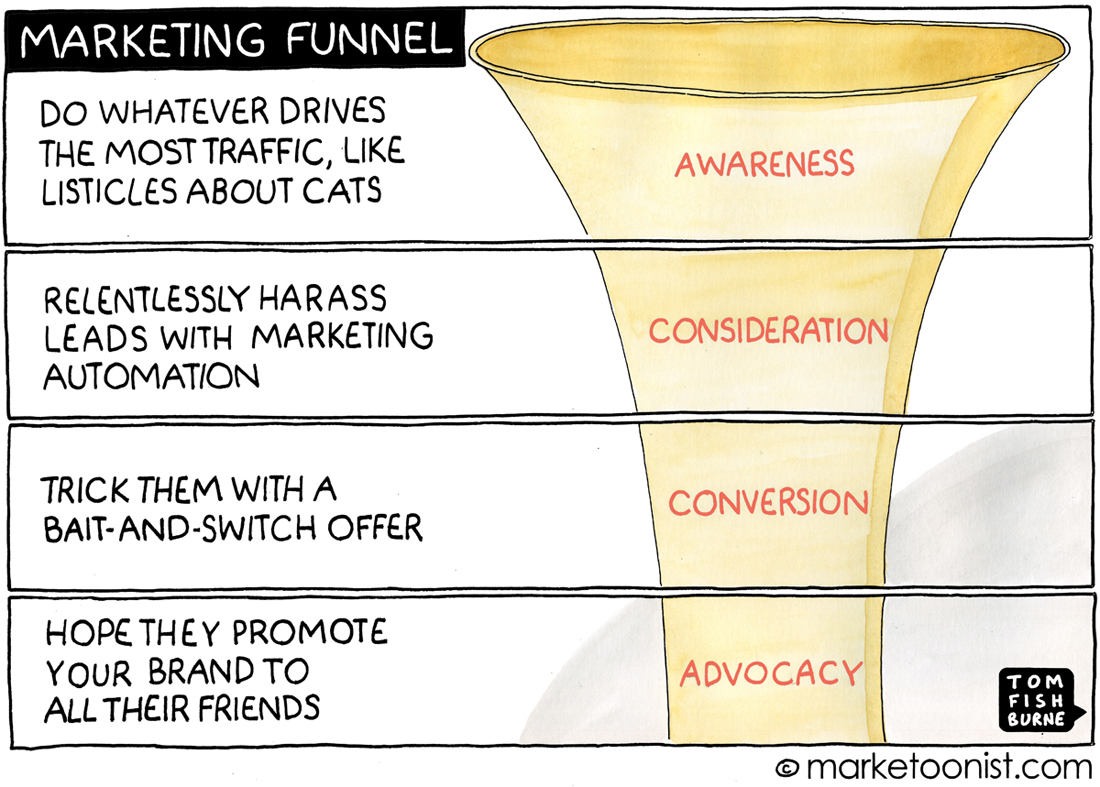
“Loyalty Programs” August 2013
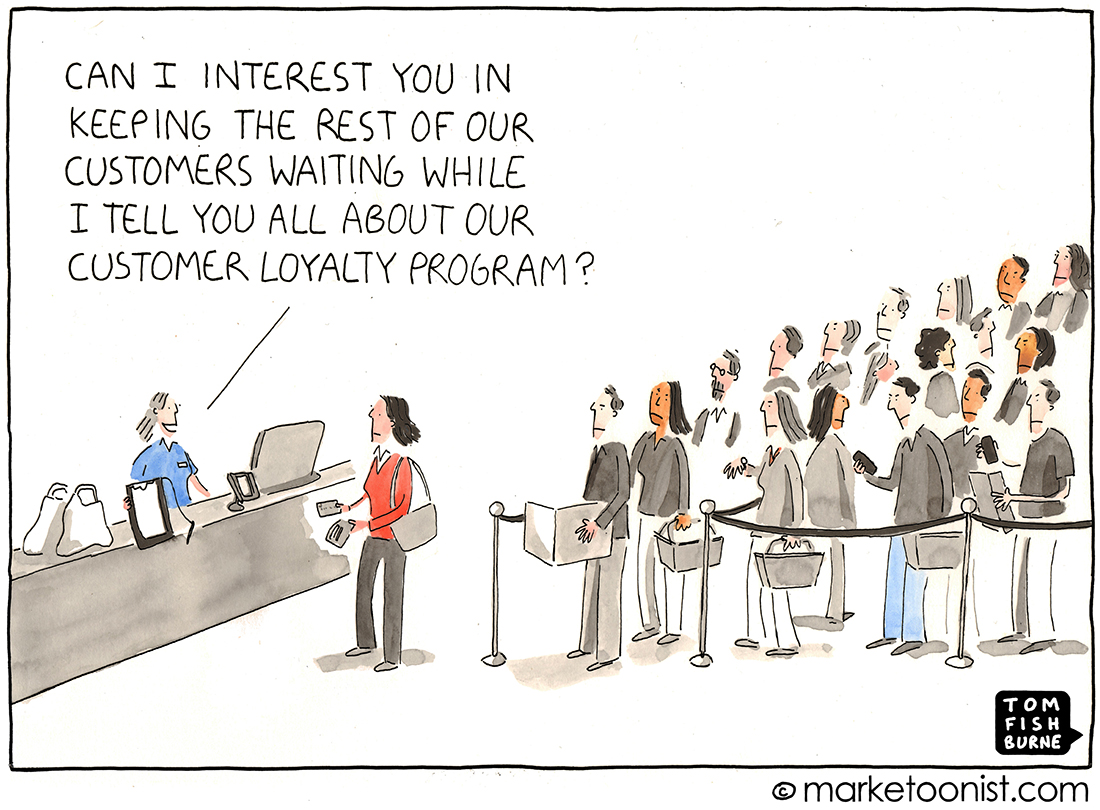
“Shopper Data” July 2014
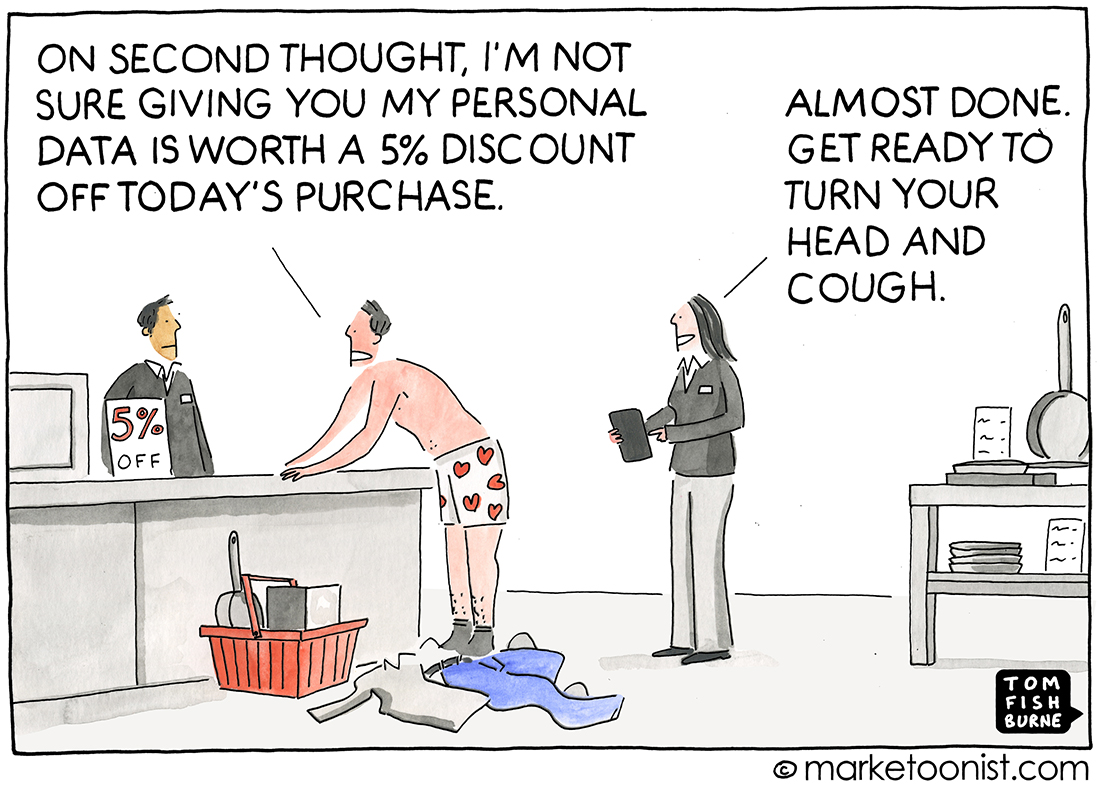
“Customer Journey Mapping” April 2016
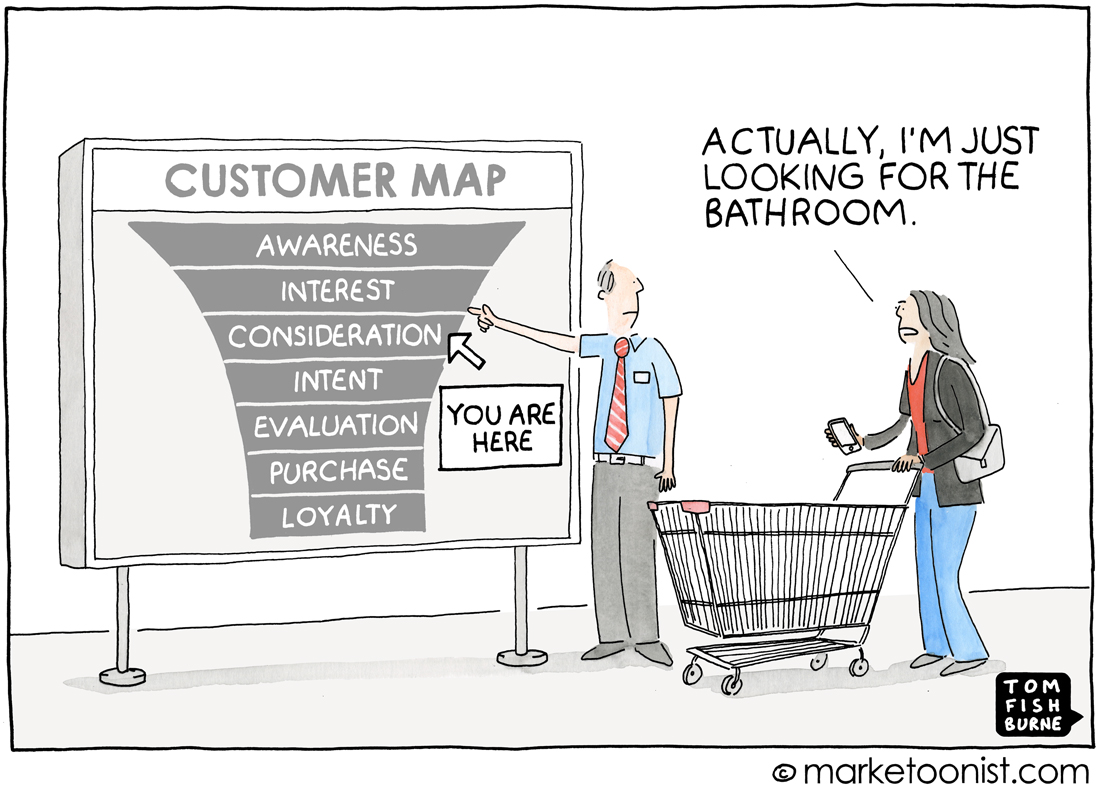
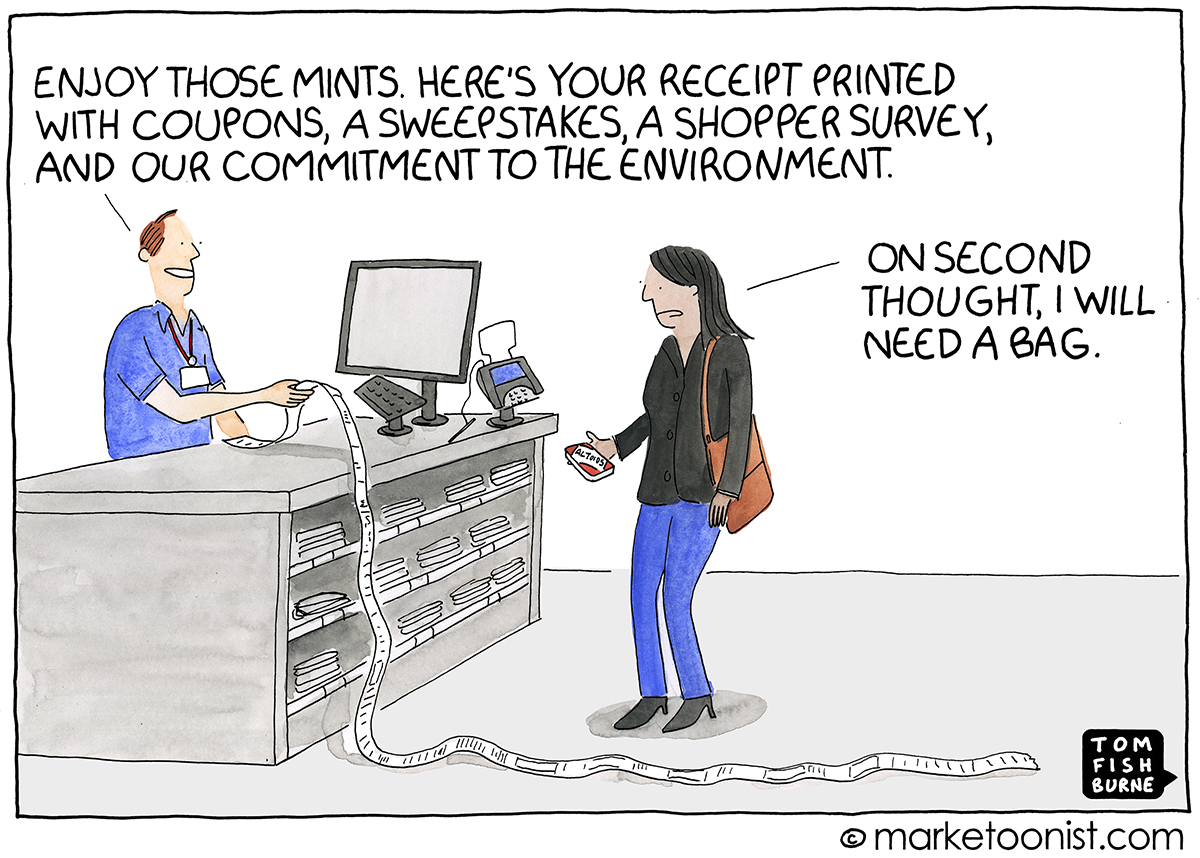
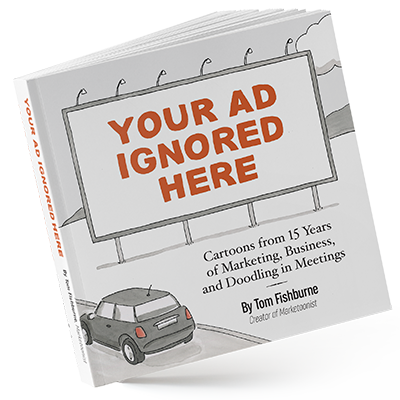
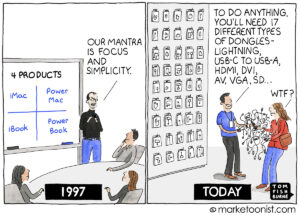
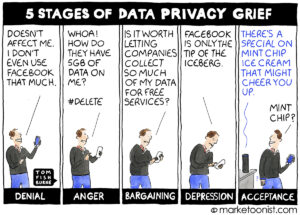
Richard Warland says
Spot on Tom – and it goes back decades in the direct-to-consumer (DM) arena.
You call it “marketing funnel vision” and I call it “spreadsheet marketing”
i.e. “It works on my spreadsheet, therefore it will work with our customers”
I often wonder if these marketeers have ever shopped at a location in their own product or service category!